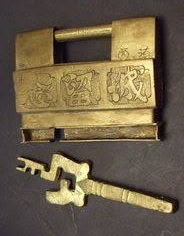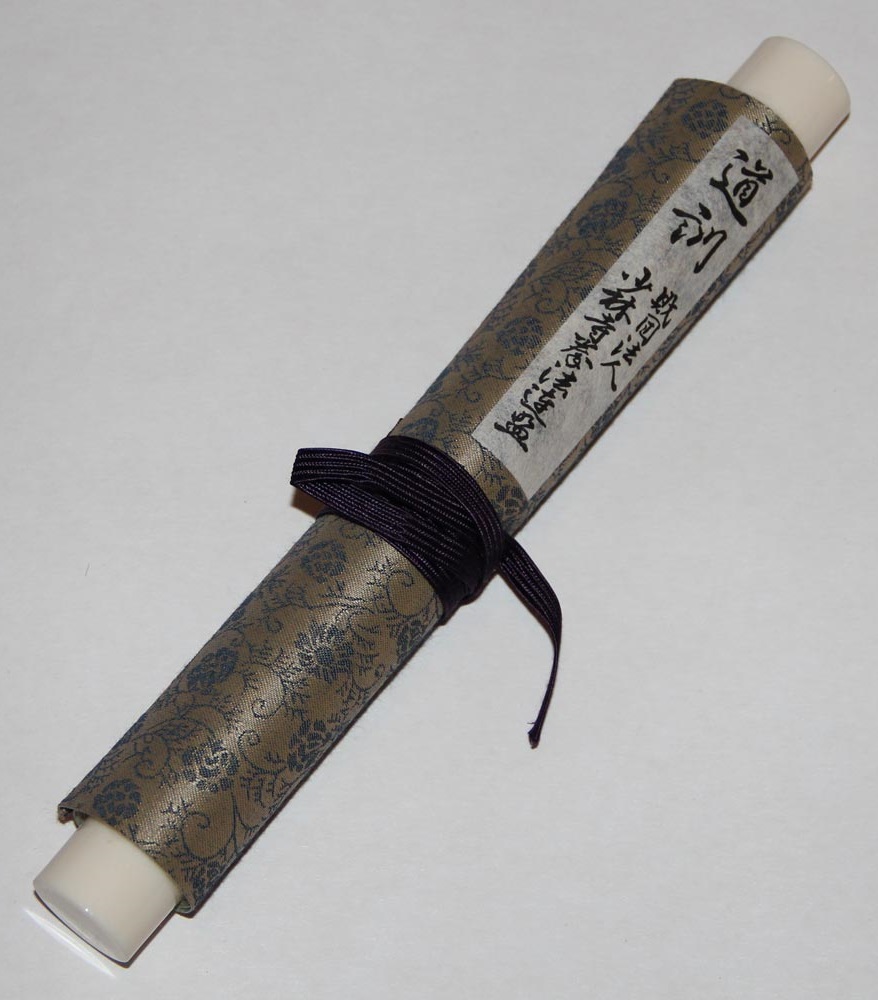
Naifanchi Shodan is the
first of three Naifanchi kata in the
Shimabukuro-Ha Shitō-Ryū karate-dō
curriculum. Shimabukuro Hanshi was
not particularly fond of the Naifanchi kata.
Early in his teaching, this was undoubtedly because the
Naifanchi kata rarely won tournaments, but even
after his shift away from sport karate, he did not
believe the Naifanchi kata added much value to
a student's training. Pellman Shihan, on the other hand, is convinced
that the Naifanchi kata are essential to a
thorough gounding in the fundamentals of karate-dō,
particularly in developing powerful koshi mawari
(hip rotation), body control, and stable stances.
The Naifanchi kata
are the only kata in the
Shitō-Ryū curriculum that
utilize kiba dachi, which is
probably why some sensei
prefer to call it Naifanchi dachi. Since
Shimabukuro Hanshi's interpretation of kiba
dachi differs somewhat from both the above video
and how it is formed in the Shōtōkan style, it
is explained in considerable detail below.
 As
shown in the diagram at left, kiba dachi is
slightly wider than shoulder
width from heel to heel. The correct foot position
can be found by starting in heikō dachi, with
both heels at shoulder width and the outside edges of
the feet parallel. Turn both feet outward 45
degrees into soto hachi-ji dachi, keeping the heels
shoulder width, then pivot on the balls of both feet
and swing both heels outward until the outside edges are again parallel.
This should result in the heels being about a half
foot-length wider than the shoulders.
As
shown in the diagram at left, kiba dachi is
slightly wider than shoulder
width from heel to heel. The correct foot position
can be found by starting in heikō dachi, with
both heels at shoulder width and the outside edges of
the feet parallel. Turn both feet outward 45
degrees into soto hachi-ji dachi, keeping the heels
shoulder width, then pivot on the balls of both feet
and swing both heels outward until the outside edges are again parallel.
This should result in the heels being about a half
foot-length wider than the shoulders.
Your body weight should be centered between the feet,
both side-to-side and front-to-back, as indicated by the
intersection point (+) of the vertical and horizontal
centre-lines in the diagram. Ankles, knee, and
hips should all be flexed slightly, but the back and
neck must remain straight; not bent or hunched forward.
The hips should also be tucked in, so that the rump does
not protrude.
Although kagi-zuki is
introduced in the kata, Shinsei, it is also
featured repeatedly in Naifanchi Shodan.
Since it is performed somewhat differently in
Shimabukuro-Ha, some additional explanation of its
performance and use is provided here. In many
other styles of karate, including the video on
this page, kagi-zuki is performed with the striking
fist stopping roughly even with the opposite side of the
body. However, in Shimabukuro-Ha, the strike
should continue past the opposite side until the
striking arm is fully extended (without turning
the shoulders), then rebound back to a point roughly
even with the opposite side of the body. This not
only ensures that the strike will make powerful contact
with the opponent, but also promotes the development of
greater koshi mawari (hip
rotation).
Another feature unique to
Naifanchi Shodan is the nami-gaeshi
geri that is performed twice with each leg
in the kata.
Nami-gaeshi geri can function as either
an up-swinging kick to the knee, potentially dislocating
the joint, or as a foot-sweep. In either use,
maintaining balance and a lower centre of gravity than
the opponent is vital to sucessful execution of the
technique. It is therefore essential to rise from
kiba dachi as little as possible and to avoid
shifting your weight side to side whilst executing the
kick. Instead, try to keep your head and body
absolutely still during nami-gaeshi geri, as if
some unseen force or support mechanism is holding you in
place. Although it is impossible not to shift
slightly, the less you do so the more difficult it is
for the opponent to counter the kick.
| |
(1) |
Be sure to perform
kiba dachi as explained above,
rather than as shown in the video |
| |
(2) |
Be sure to perform kagi-zuki
as described above, rather than as shown in the
video |
| |
(3) |
In age zuki, the
non-striking hand should not move until the
striking hand has reached full upward extension.
As the striking hand retracts, the non-striking
hand should swing up parallel to the floor so
that the back of its fist contacts the bottom of
the striking arm elbow at the completion of the
movement. |
| |
(4) |
Be sure to perform nami-gaesshi
geri with minimal rising or
shifting of the weight side-to-side, as
described above |
|
(5) |
When performing
yoko morote zuki, be
sure the fist striking with kagi-zuki
makes a fully extended strike (and rebound) and
the other hand performs a true
yoko-zuki (straight sideways
punch), rather than uraken zuki or
yoko kentsui uchi |
Performing
Naifanchi Shodan in the manner described above
will ensure that you receive the maximum benefit from
your training in this kata and greatly improve your body
control, stability, and koshi mawari for more
striking speed and power.


 As
shown in the diagram at left, kiba dachi is
slightly wider than shoulder
width from heel to heel. The correct foot position
can be found by starting in heikō dachi, with
both heels at shoulder width and the outside edges of
the feet parallel. Turn both feet outward 45
degrees into soto hachi-ji dachi, keeping the heels
shoulder width, then pivot on the balls of both feet
and swing both heels outward until the outside edges are again parallel.
This should result in the heels being about a half
foot-length wider than the shoulders.
As
shown in the diagram at left, kiba dachi is
slightly wider than shoulder
width from heel to heel. The correct foot position
can be found by starting in heikō dachi, with
both heels at shoulder width and the outside edges of
the feet parallel. Turn both feet outward 45
degrees into soto hachi-ji dachi, keeping the heels
shoulder width, then pivot on the balls of both feet
and swing both heels outward until the outside edges are again parallel.
This should result in the heels being about a half
foot-length wider than the shoulders. When
learning any new kata, it is important to remind
oneself of the adage: "Manabu no tame ni hyakkkai,
jukuren no tame ni senkai, satori no tame ni manga
okonau" (学ぶのために百回、熟練のために千回、悟りのために万回行う.).
A hundred times to learn, a thousand
times for proficiency, ten thousand
repetitions for complete understanding.
A related Okinawan saying is "ichi kata san nen"
(一型三年): one kata
three years.
When
learning any new kata, it is important to remind
oneself of the adage: "Manabu no tame ni hyakkkai,
jukuren no tame ni senkai, satori no tame ni manga
okonau" (学ぶのために百回、熟練のために千回、悟りのために万回行う.).
A hundred times to learn, a thousand
times for proficiency, ten thousand
repetitions for complete understanding.
A related Okinawan saying is "ichi kata san nen"
(一型三年): one kata
three years. 